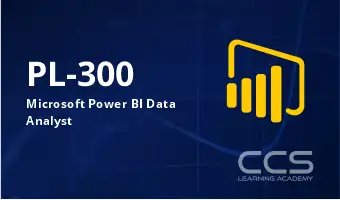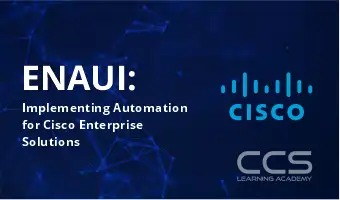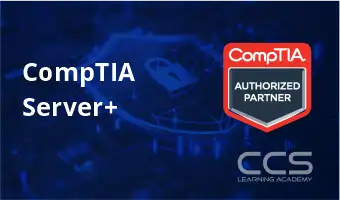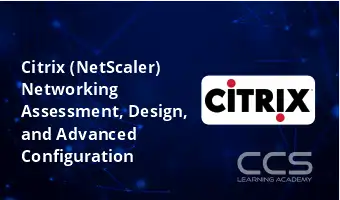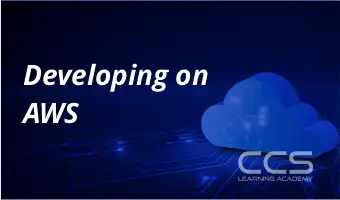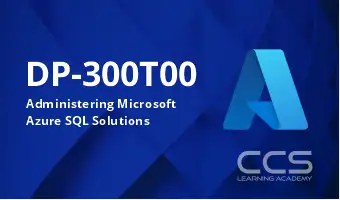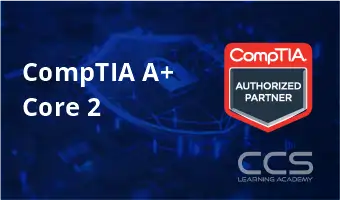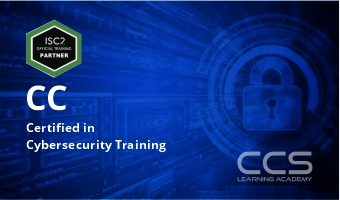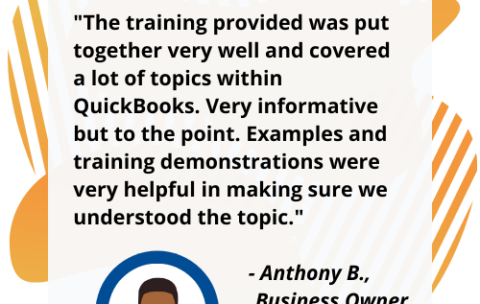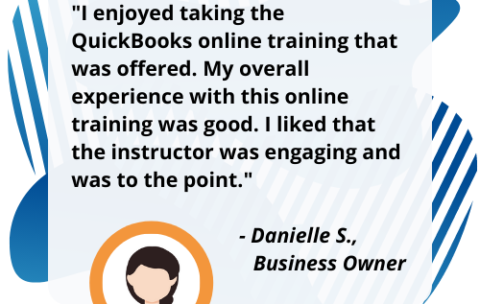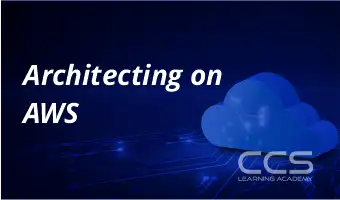Popular Topics
Data Analyst
CompTIA Security+
Risk and Compliance
Certified in Cybersecurity Training
CISSP
Certified in Governance
AWS
Developing Generative AI on AWS
Microsoft Office 365 Online
Microsoft Azure
CISSP Exam Preparation Course
Cloud Computing
Administering A SQL Database
CompTIA Cybersecurity Analyst
ITIL 4 Certification
Certified Cloud Security Professional
Azure AI Fundamentals
CompTIA Linux
PECB ISO 31000 Certification
Generative AI Applications on AWS
Penetration Testing Professional
Security Engineering on AWS
Developing AWS Services and Tools
ISO 22301 Certification
Chief Information Security Officer
ITIL 4 Foundation Certification Training
Penetration Testing Certification
Network Defender
AWS Cloud Essentials
SQL Data Models
SQL Server Integration
ISO / IEC 42001 Lead Auditor
Citrix
SQL Data Warehouse
ISO/IEC 42001 Lead Implementer
Microsoft PoerShell
Security on AWS
Cloud Operations on AWS
ISO 22301 Lead Auditor
SharePoint End User
Microsoft Azure Data Fundamentals
Certified Secure Software Lifecycle Professional
CompTIA
Cybersecurity Analyst
Microsoft Azure Certification
SQL Server Performance Tuning
ISO 31000 Certification
Advanced Developing on AWS
SQL Server Performance Optimization
ISO 31000 Risk Manager
Cybersecurity Certification
SQL Database Infrastructure
CompTIA A+ Core 1
CMMC Foundations
Azure Infrastructure Solutions
CompTIA Server
ISO / IEC 42001 Certification
Citrix Endpoint Management
CMMC Certification
Azure AI Solution
CompTIA PenTest
Microsoft Power BI Data Analyst
CMMC Certified Professional
Citrix Cloud with Amazon Web Services
CompTIA Data+
CompTIA Cloud Essentials+
Azure SQL Solutions
Lead Cloud Security Manager
Microsoft Azure for SAP Workloads
Microsoft Azure Administrator
PL-600 Power Platform Solution Architect
CompTIA Project
CompTIA A+ Core 2
Cloud Security Manager
CompTIA Network
Cloud Security Certification
ISO 22301 Lead Implementer
Lead Pen Test Professional
Microsoft Azure Fundamentals Training Certification
ISO 31000 Lead Risk Manager
Microsoft Project 2016 Level 1
CompTIA IT Fundamentals
Cybersecurity Foundation
Microsoft Project 2016: Level 2
CompTIA Cloud
All `Live Courses by Vendor Courses
Filter by Topic
Filter by Vendor
Get Going With QuickBooks 2021 for Windows
Course Description First-time QuickBooks users will learn the basic features …
Get Smart With QuickBooks 2021 for Windows
Course Description First-time QuickBooks users will learn the basic features …
Analyze and Visualize Data using Tableau
Course Description: The Analyze and Visualize Data using Tableau Certification …
What you'll learn
Basics about Tableau
How to connect, organize and slice data using Tableau
How to use multiple measures in a view
How learners can successfully show the relationship between various numerical values
How to map and customize data
How to view specific data
How to use quick table calculations to analyze the data in Tableau
How to use basic and advanced calculations in Tableau
How to extract data
What Tableau geocoding is
How to create using parameters
How to make dashboards and stories
Using Tableau to generate statistics
Using Tableau for forecasting
How to compare measures
How to assess the quality of data
How to use Tableau to perform exploratory analysis
Best practices while using Tableau
How to design visualizations for presentations
Architecting on AWS
Course Description In this authorized Amazon Web Services (AWS) course, …
What you'll learn
Making decisions based on the AWS-recommended architectural principles and best practices
Leveraging AWS services to make your infrastructure scalable, reliable, and highly available
Leveraging AWS managed services to enable greater flexibility and resiliency in an infrastructure
Making an AWS-based infrastructure more efficient in order to increase performance and reduce costs
Using the Well-Architected Framework to improve architectures with AWS solutions
To reinforce this material, you will also explore case studies with a variety of AWS infrastructure designs and strategies.
After the course, you will be fully equipped to build and scale a more efficient and reliable IT solution on the AWS cloud environment.
55286-A: SharePoint 2019 Power User
Course Description This course delivers the complete site owner story …
What you'll learn
Understand the benefits of using SharePoint in real world scenarios
Create new SharePoint sites to store business information
Create pages to share news and documents
Customize the structure of a site to meet specific business requirements
Create and mange view, columns and apps
Manage the security of a site
Use social tools to communicate with groups of people or the entire organization
Use search to find business information including people to documents
Describe popular reasons to use SharePoint 2019
Understand user roles in SharePoint 2019
Navigate SharePoint 2019
Manage your OneDrive and MySite
Understand the benefits of using site templates when creating new sites
Correctly use Site Collections and Sites
Control site navigation
Delete and Restore sites
Know when to create pages
Create all types of pages
Add content to a page including images and videos
Use publishing page content such as renditions and reuable content
Understand the App template available in SharePoint 2019
Create new apps to store business information
Customize apps with Columns, Views and App settings to make them relevant to specific business
Use SharePoint Apps with other Office applications including Excel and Outlook
Sort and Filter documents
Understand how to create a new approval flow
Understand how to create a new powerapp
Understand and instating a business process
Understand how to share content ina library and associated permissions
Understand how to create new permission levels and security groups
Understand how to add and remove users
Describe the key features of search
Use search to find content including people, sites and videos
Use search web parts to roll up content from multiple locations
Describe the benefits of using SharePoint social tools
Create social content including blog posts, discussions and newsfeed posts
55205-A: Mastering Microsoft Project 2016
Course Description: This three-day, instructor-led course is intended for individuals …
What you'll learn
Understand the discipline of project management as it applies to using Microsoft Project 2016.
Create a Work Breakdown Structure.
Identify Task Types & Relationships.
Define Resources within Project.
Make Work Package Estimates.
Create an Initial Schedule.
Create a Resource Leveled Schedule.
Create Projects from templates, Excel files.
Create Global templates.
Create formulas and graphical indicators.
The steps to record a macro.
Format Output and Print Reports.
Integrate Multiple Projects.
Set up a Project with a Calendar, Start date, and scheduling method.
Understand Manually Schedule vs. Auto Schedule.
Manage multiple projects.
Be able to create a master project list with shared resources.
Have a fundamental understanding of how Microsoft Project will help them track their projects.
Understand what is new in Project 2016 and how it will increase their productivity.
Learn how the ribbon will help them get the most of out of this productivity tool.
Learn how to quickly change views and see what is going on with their projects.
Understand the 5 essential steps in building a successful project plan.
Prepare a new project plan and set the date and other basic information.
Enter detailed project information.
Understand how to sequence tasks.
Understand and define basic resource types.
Assign resources to tasks.
Understand the benefits of baselining a project or specific tasks.
Understand the basics of how to track project progress.
Create a new project using a template, Excel, a SharePoint Tasks List or a new Project file.
Establish one or more calendars to constrain resource availability.
Configure Microsoft Project to calculate the schedule from the Start Date forward or from the Finish Date backward.
Understand how to turn on Manually Schedule and Auto Schedule.
Understand when to use Manually Schedule.
Understand the limitations of Manually Scheduling.
Build and use summary and subordinate tasks.
Understand and use milestones.
How to organize the WBS.
How to format the WBS.
Develop WBS outlines.
Assign completion criteria.
Evaluate the WBS.
Understand and use WBS outlines.
Understand how to link Project artifacts to their projects.
Understand how to create notes on tasks.
Understand the different types of task relationships.
Understand and use various methods to create relationships.
Determine and display task sequence.
Understand how to use Lag, Lead and Delay.
Define the different types of resources.
Define individual resources that will be used on the project.
Record the cost(s) of using each type of resource.
Record the limit of availability for each type of resource by establishing a resource calendar and defining the maximum units of that resource.
Assign values for resources, duration and work.
Understand task types.
Understand Effort Driven scheduling.
Understand material resources and their costs to a project plan.
Identify the critical path.
Understand difference between slack and slippage.
Calculate float.
How to leverage constraints.
How to get the benefit from the Task Inspector, and the impact of changes on a project schedule.
Adjust a project schedule to account for limited resources.
View the overall cost and schedule of a project.
Identify resources that are over- allocated for a project schedule.
Use multiple ways to adjust tasks and assignments to remove over- allocation for any resource.
Set a baseline.
Enter and manage project performance data.
Pick a tracking method.
Perform variance analysis.
Sync Projects results with SharePoint.
Create standardized views, with the power of sorting, filtering and grouping.
Customize a variety of standard reports.
Learn how to use Visual Reports.
Export reports in a variety of formats.
Use common resources among multiple projects.
Link tasks between multiple projects.
Create a consolidated view of multiple projects and shared resources.
Take advantage of the advance features of Microsoft Project.
Be able to create a Macro.
Share common settings among all future projects.
PL-900T00: Microsoft Power Platform Fundamentals
Course Description: Learn the business value and product capabilities of …
What you'll learn
Describe Microsoft Power Platform components
Describe Microsoft Dataverse, Connectors and AI builder
Describe cross-cloud scenarios across M365, Dynamics 365, Microsoft Azure and 3rd party services
Identify benefits and capabilities of Microsoft Power Platform
Identify the basic functionality and business value Microsoft Power Platform components
Implement simple solutions with Power Apps, Power Automate, Power BI, and Power Virtual Agents
Identify when to use each Microsoft Power Platform component application to create business solution
Learn the value of using Microsoft Power Platform to create business solutions
Learn the components and features of Microsoft Power Platform
Descibe the difference between Dataverse and Common Data Model
Explain use cases and limitations of business rules and process flows
Explain what environments, tables, columns, and relationships are in Dataverse
Learn how other organizations digitize their processes using Power Apps
See Power Apps in action and learn options for making your first app
Learn about what Power Apps is and its business value
See how Power Automate works and looks from the user’s perspective
Build a simple flow
Learn the business value and features of Power Automate
See how Power BI works and looks from the user’s perspective
Learn how to build a simple Power BI dashboard
Describe the business value and features of Power BI
Describe the business value and features of Power Virtual Agents
Build a basic chatbot
Learn essential components that make up Power Virtual Agents and chatbots
55232-A: Writing Analytical Queries for Business Intelligence
Course Description: This three-day instructor led course is about writing …
What you'll learn
Identify independent and dependent variables and measurement levels in their own analytical work scenarios.
Identify variables of interest in relational database tables.
Choose a data aggregation level and data set design appropriate for the intended analysis and tool.
Use TSQL SELECT queries to produce ready-to-use data sets for analysis in tools such as PowerBI, SQL Server Reporting Services, Excel, R, SAS, SPSS, and others.
Create stored procedures, views, and functions to modularize data retrieval code.
Describe the purpose of analytical queries
Describe the function of TSQL data retrieval in an analytics/business intelligence environment
Describe the primary functions of the database engine
Discuss TSQL as a declarative language
Identify variables of interest in database tables
Write basic SELECT queries
Implement column expressions in SELECT queries
Implement column and table aliases
Describe data types and Implement data type conversions
Implement built-in functions
Use WHERE and ORDER BY clauses in SELECT queries
Discuss and describe the conceptual flow of JOIN operations
Implement INNER and OUTER JOIN operations on two or more tables
Describe the order of operations of SELECT clauses
Combine JOIN operations with WHERE and ORDER BY
Describe the row granularity of result sets
Discuss and implement aggregate functions to achieve required row granularity
Use GROUP BY to calculate aggregate values for groups
Use HAVING to filter records in the result set by aggregate value
Combine GROUP BY and HAVING with WHERE and ORDER BY
Describe and discuss the rationale of creating intermediate results sets within SELECT queries
Implement non-correlated and correlated subqueries
Implement derived tables
Implement Common Table Expressions
Create intermediate to advanced TSQL queries to retrieve result sets for analysis
Identify scenarios in which views, table-valued functions, and stored procedures simply data retrieval
Compare and contrast views, table-valued functions, and stored procedures
Create views, table-valued functions, and stored procedures
Describe the security requirement for creating database objects
Implement views, table-valued functions, and stored procedures for users with read-only access to source data
Describe the properties of database connection strings
Run queries from, and return results to, Excel, PowerBI, and RStudio
Export query results to external text files using the SSMS results pane, the bcp utility, and the Import/Export Wizard

